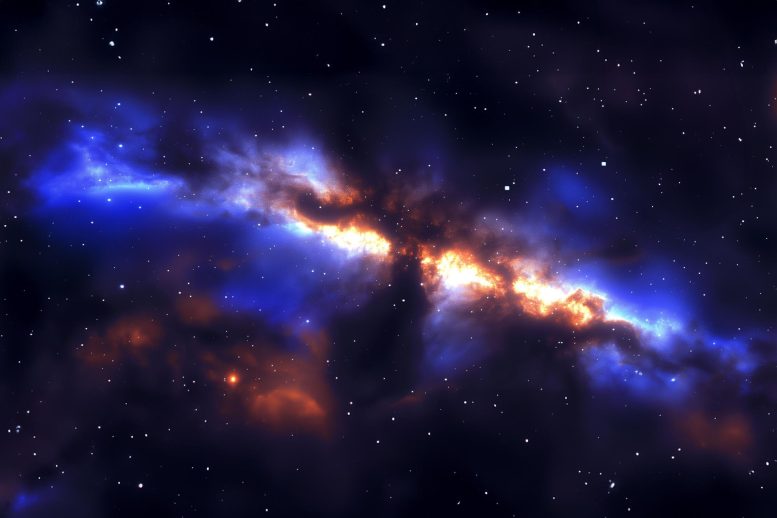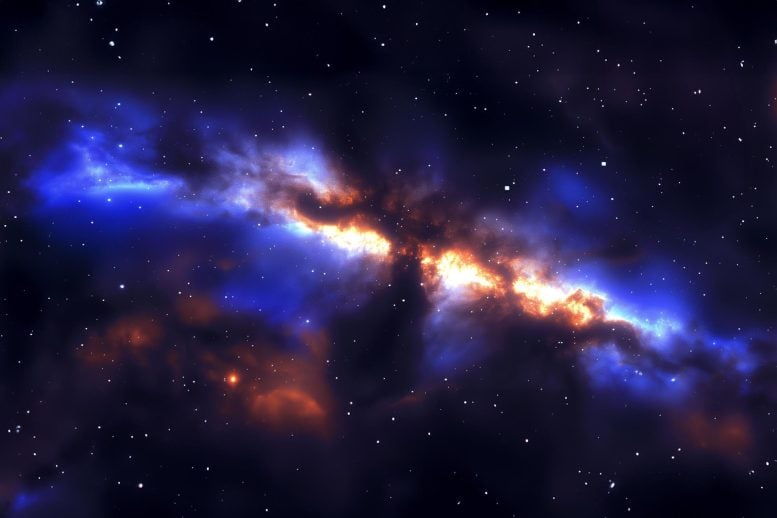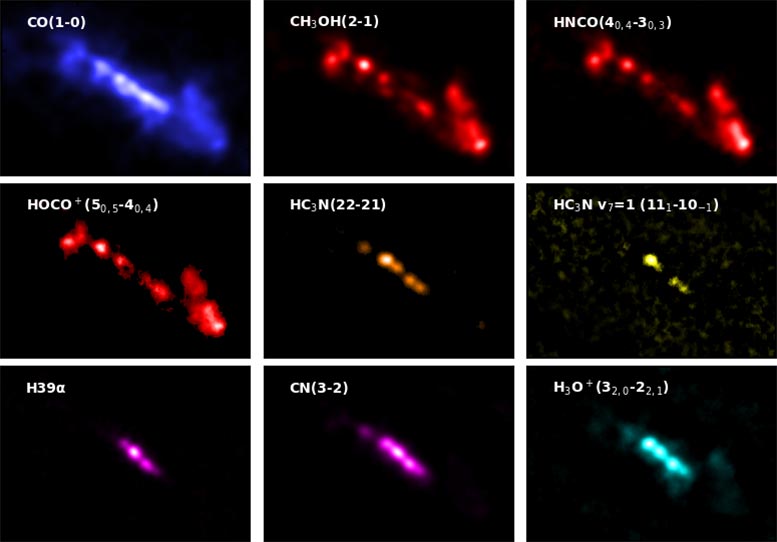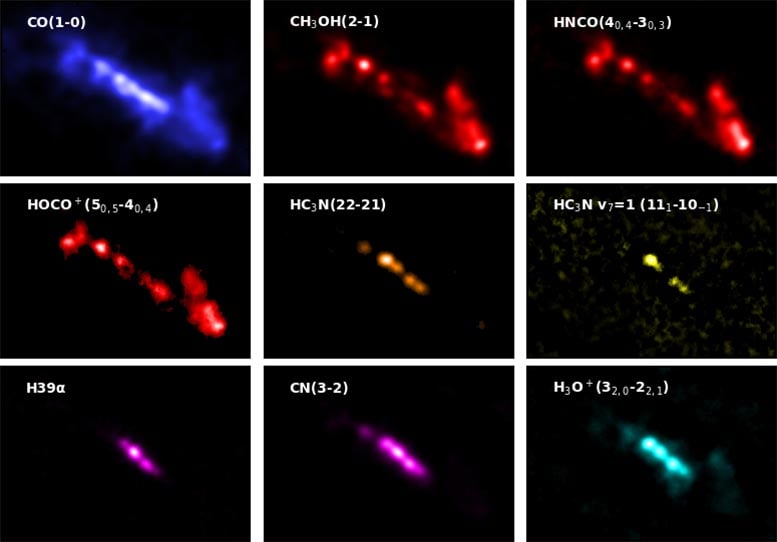

Researchers using the ALMA telescope discovered over 100 molecular species in the starburst galaxy NGC 253, which is forming stars much more actively than the Milky Way. (Artist’s concept.) Credit: SciTechDaily.com
ALMA’s observation of NGC 253 reveals significant molecular diversity and star formation, enhancing our knowledge of galactic processes.
The ALMA radio telescope has detected more than 100 molecular species, including many indicative of different star formation and evolution processes, in a galaxy where stars are forming much more actively than in the Milky Way. This is far more molecules than were found in previous studies. Now the team will try to apply this knowledge to other galaxies.
Research Team and Galaxy Overview
A team of researchers led by Sergio Martin of the European Southern Observatory/Joint ALMA Observatory, Nanase Harada of the National Astronomical Observatory of Japan, and Jeff Mangum of the National Radio Astronomy Observatory used ALMA (Atacama Large Millimeter/submillimeter Array) to observe the center of a galaxy known as NGC 253.
NGC 253 is located about 10 million light-years away in the direction of the constellation Sculptor. NGC 253 is an example of a starburst galaxy, a galaxy where many new stars are forming rapidly. The factors leading to the onset of a starburst are still not well understood.


The different colors represent the distribution of molecular gas (blue), shocked regions (red), relatively high-density regions (orange), young starbursts (yellow), developed starbursts (magenta), and molecular gas affected by cosmic-ray ionization (cyan). Credit: ALMA (ESO/NAOJ/NRAO), N. Harada et al.
Molecular Insights and Star Formation
The birth, evolution, and death of stars change the molecular composition of the surrounding gas. ALMA’s high sensitivity and high resolution allowed astronomers to determine the locations of molecules indicative of the various stages in the life cycle of stars.
This survey, dubbed ALCHEMI (ALMA Comprehensive High-resolution Extragalactic Molecular Inventory), found high-density molecular gas that is likely promoting active star formation in this galaxy. The amount of dense gas in the center of NGC 253 turned out to be more than 10 times higher than that in the center of the Milky Way, which could explain why NGC 253 is forming stars about 30 times more efficiently.
Molecular Atlas and Future Implications
The ALCHEMI survey also provided an atlas of 44 molecular species, doubling the number available from previous studies outside the Milky Way. By applying a machine-learning technique to this atlas, the researchers were able to identify which molecules serve as the best signposts to trace the story of star formation from the beginning to the end. This knowledge will help in planning future ALMA observations.
Reference: “The ALCHEMI Atlas: Principal Component Analysis Reveals Starburst Evolution in NGC 253” by Nanase Harada, David S. Meier, Sergio Martín, Sebastien Muller, Kazushi Sakamoto, Toshiki Saito, Mark D. Gorski, Christian Henkel, Kunihiko Tanaka, Jeffrey G. Mangum, Susanne Aalto, Rebeca Aladro, Mathilde Bouvier, Laura Colzi, Kimberly L. Emig, Rubén Herrero-Illana, Ko-Yun Huang, Kotaro Kohno, Sabine König, Kouichiro Nakanishi, Yuri Nishimura, Shuro Takano, Víctor M. Rivilla, Serena Viti, Yoshimasa Watanabe, Paul P. van der Werf and Yuki Yoshimura, 15 March 2024, The Astrophysical Journal Supplement Series.
DOI: 10.3847/1538-4365/ad1937
